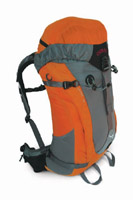Retailers cheered and the textile sector groaned after the United States signed an apparel agreement with Vietnam giving a generous package of clothing quotas to the country that was the site of one of the U.S. military’s most humiliating retreats.
The textile agreement, signed late Friday and announced on Saturday, will allow Vietnam to double its apparel exports to the United States this year and then grow steadily as it implements a complicated but often flexible system of quotas. As an executive agreement, it does not require congressional approval. It will go into effect May 1.
But the pact, which sputtered and was revived several times last week, illustrated the bitter divisions between retailers like The Limited and The Gap, always on the lookout for cheaper suppliers to help boost profits; and the nation’s textile mills, where the latest mill to announce its closing inspired the 1979 movie Norma Rae. The industry has lost nearly 200,000 jobs since President Bush took office in an economy that has shed some two million jobs in two years.
“This agreement will directly result in thousands of additional lost U.S. manufacturing jobs,” said Augustine D. Tantillo, the Washington coordinator for the American Manufacturing Trade Action Coalition.
Vietnam received the largest quota for knit shirts of any country in the world, at 168 million garments this year, topping any individual nation in the Caribbean Basin pact or other recent trade partners. Textile mills had called for tighter caps because knit shirts stitched at assembly plants in Mexico or Caribbean and Central American countries use predominantly U.S. woven fabric.
In a scant two years, Vietnam has grown from almost nothing to become the sixth largest supplier of apparel to the U.S. market. The country exported $49 million in apparel in 2001 and $950 million in 2002. The agreement will allow Vietnam’s apparel exports to the United States to grow to $1.7 billion this year, followed by a 7 percent increase annually.
On its face, the agreement is just a list of caps on 38 separate categories of clothing, such as cotton hosiery, knit shirts and blouses. It also includes pledges by Vietnam to comply with measures to improve working conditions in its factories and a memorandum of understanding regarding “democracy in the workplace,” according to a U.S. trade official.
But at its core it reflects the vastly divergent interests of retailers and the textile industry.
Those divisions were reflected in government agencies, with the Commerce Department questioning the large quotas being handed to Vietnam. Not only had Commerce Secretary Donald Evans promise to protect textile mills, but Bush administration officials admitted that there was evidence that Vietnam was cheating on its exports by shipping Chinese-made apparel in boxes that said “Made in Vietnam.” This practice is illegal under the rules of global trade.
But a meeting between Evans and U.S. Trade Representative Robert Zoellick on Friday appeared to have smoothed over Commerce’s objections to the pact, according to industry sources.
The National Retail Federation in Washington praised the accord, which the industry had lobbied heavily for. “This is a balanced agreement that will allow trade with Vietnam to continue and grow,” said Tracy Mullin, the president and CEO of the retailers group.
The textile industry was not pleased.
“Evans came to our annual meeting 14 months ago,” said Cass Johnson, associate vice president for international trade at the American Textile Manufacturers Institute. “He had a script and he tore it up and said: `Youve got a friend in Washington. I want you to judge us by our actions not by our words. “
















